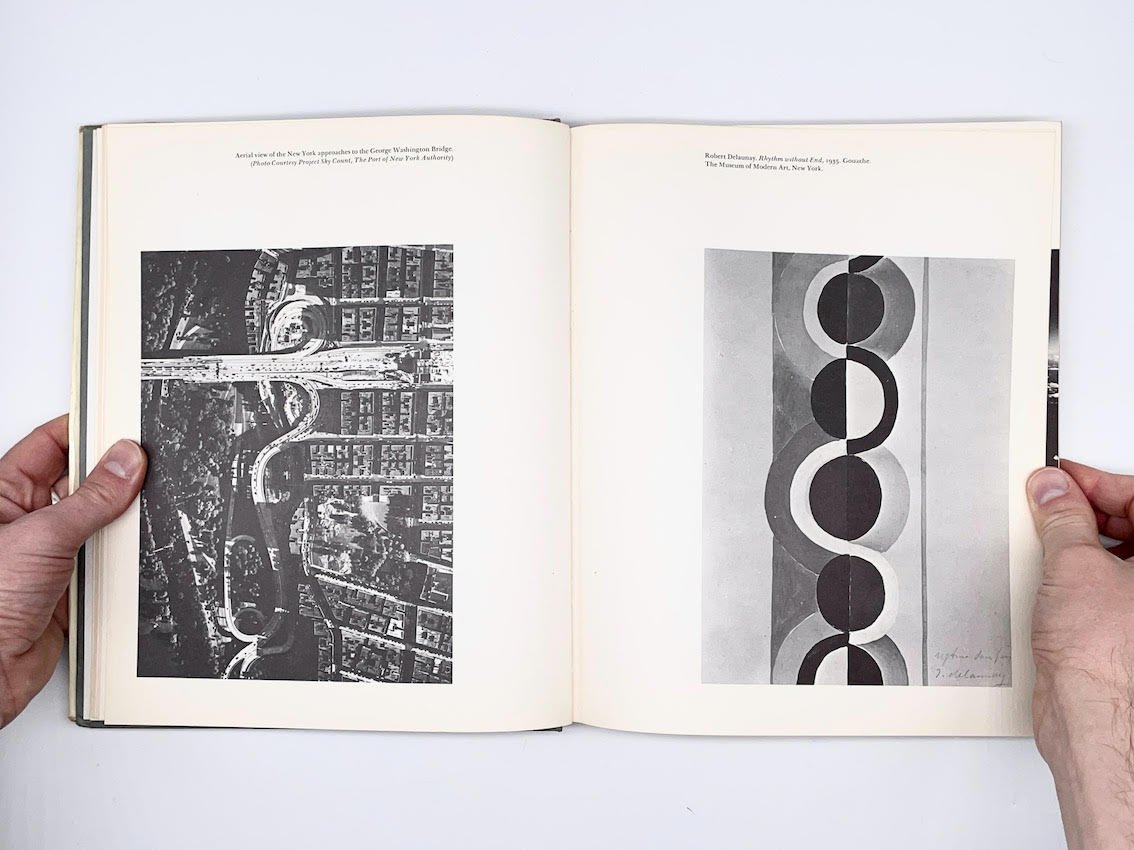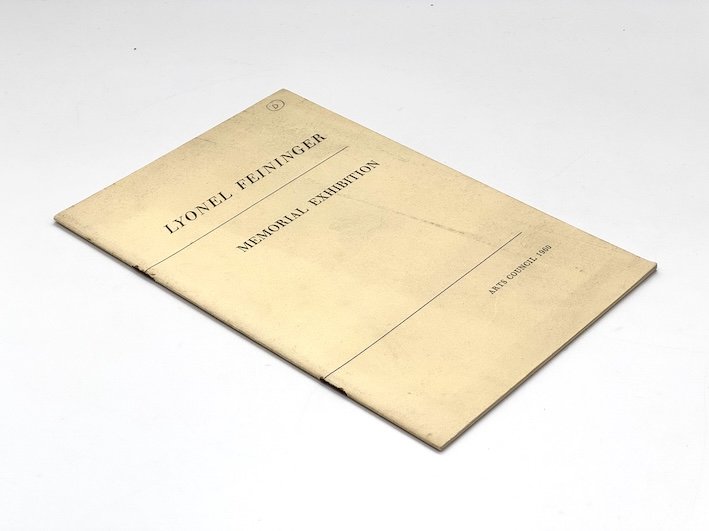The Nature and Art of Motion 1965
Title: The Nature and Art of Motion
Author: Gyorgy Kepes (ed.)
Publisher: George Braziller New York / Studio Vista London
Publication date: 1965
Format: Dust jacket over grey cloth covered boards with gilt titles to spine
Pages: 195
Images: Profusely illustrated in b/w
Dust Jacket Condition: Very good, shelfwear to outer edges, corners bumped and rubbed, marked and scuffed.
Book Condition: Ghosting to front flyleaf otherwise very good
Stock Number: RB02861
“Events to-day appear to be accelerating insanely, as if we were living a million times more slowly among objects whirling beyond the threshold of our control . . . We should understand that this dizzying, runaway environment is just the final reverberation of a longevolving change in the foundation of our knowledge and system of values . . . Not least among its roots is change in our scientific understanding of motion.”
The many facets of motion discussed in The Nature and Art of Motion offer us a pattern of interpretation, vital to a greater understanding of our contemporary environment. This work examines motion as a pervasive aspect of nature and a key problem of contemporary physics; evolutionary motion as seen in the continual transformation of matter and ideas; perception of motion and its role as a generator of vision and insight; modern techniques, such as the film, which have used motion to extend the range of man-made images; the influence of the complex dynamics of the visual world on our ways of seeing, as expressed in certain works of contemporary art.
The first five chapters of this volume in the Vision and Value series deal with broad aspects of motion. A physicist treats the process of deallegorisation and mathematisation 0f the mental models of motion leading to the discovery and control of nuclear energy. An art historian applies concepts of biological evolution to stylistic change. An aesthetician deals with our artistic response to our knowledge and technology of motion. The following two chapters are by psychologists, both pioneers in the understanding of the motion factor in our perception.
The chapters in the second part deal with some specific character of artistic expression which utilises motion as a central theme. In the first of these, a painter and graphic artist discusses the techniques of projecting an image of movement, others deal with current kinetic art, and motion in the art of the film. Another chapter deals with the problem of Structure and continuity in large-scale exhibition design, providing insights into the growth problems of sequence structures. The final chapter, by a city planner, projects the problems of dynamic visual organization on to the tremendous and challenging scale of the urban environment.
Title: The Nature and Art of Motion
Author: Gyorgy Kepes (ed.)
Publisher: George Braziller New York / Studio Vista London
Publication date: 1965
Format: Dust jacket over grey cloth covered boards with gilt titles to spine
Pages: 195
Images: Profusely illustrated in b/w
Dust Jacket Condition: Very good, shelfwear to outer edges, corners bumped and rubbed, marked and scuffed.
Book Condition: Ghosting to front flyleaf otherwise very good
Stock Number: RB02861
“Events to-day appear to be accelerating insanely, as if we were living a million times more slowly among objects whirling beyond the threshold of our control . . . We should understand that this dizzying, runaway environment is just the final reverberation of a longevolving change in the foundation of our knowledge and system of values . . . Not least among its roots is change in our scientific understanding of motion.”
The many facets of motion discussed in The Nature and Art of Motion offer us a pattern of interpretation, vital to a greater understanding of our contemporary environment. This work examines motion as a pervasive aspect of nature and a key problem of contemporary physics; evolutionary motion as seen in the continual transformation of matter and ideas; perception of motion and its role as a generator of vision and insight; modern techniques, such as the film, which have used motion to extend the range of man-made images; the influence of the complex dynamics of the visual world on our ways of seeing, as expressed in certain works of contemporary art.
The first five chapters of this volume in the Vision and Value series deal with broad aspects of motion. A physicist treats the process of deallegorisation and mathematisation 0f the mental models of motion leading to the discovery and control of nuclear energy. An art historian applies concepts of biological evolution to stylistic change. An aesthetician deals with our artistic response to our knowledge and technology of motion. The following two chapters are by psychologists, both pioneers in the understanding of the motion factor in our perception.
The chapters in the second part deal with some specific character of artistic expression which utilises motion as a central theme. In the first of these, a painter and graphic artist discusses the techniques of projecting an image of movement, others deal with current kinetic art, and motion in the art of the film. Another chapter deals with the problem of Structure and continuity in large-scale exhibition design, providing insights into the growth problems of sequence structures. The final chapter, by a city planner, projects the problems of dynamic visual organization on to the tremendous and challenging scale of the urban environment.
Title: The Nature and Art of Motion
Author: Gyorgy Kepes (ed.)
Publisher: George Braziller New York / Studio Vista London
Publication date: 1965
Format: Dust jacket over grey cloth covered boards with gilt titles to spine
Pages: 195
Images: Profusely illustrated in b/w
Dust Jacket Condition: Very good, shelfwear to outer edges, corners bumped and rubbed, marked and scuffed.
Book Condition: Ghosting to front flyleaf otherwise very good
Stock Number: RB02861
“Events to-day appear to be accelerating insanely, as if we were living a million times more slowly among objects whirling beyond the threshold of our control . . . We should understand that this dizzying, runaway environment is just the final reverberation of a longevolving change in the foundation of our knowledge and system of values . . . Not least among its roots is change in our scientific understanding of motion.”
The many facets of motion discussed in The Nature and Art of Motion offer us a pattern of interpretation, vital to a greater understanding of our contemporary environment. This work examines motion as a pervasive aspect of nature and a key problem of contemporary physics; evolutionary motion as seen in the continual transformation of matter and ideas; perception of motion and its role as a generator of vision and insight; modern techniques, such as the film, which have used motion to extend the range of man-made images; the influence of the complex dynamics of the visual world on our ways of seeing, as expressed in certain works of contemporary art.
The first five chapters of this volume in the Vision and Value series deal with broad aspects of motion. A physicist treats the process of deallegorisation and mathematisation 0f the mental models of motion leading to the discovery and control of nuclear energy. An art historian applies concepts of biological evolution to stylistic change. An aesthetician deals with our artistic response to our knowledge and technology of motion. The following two chapters are by psychologists, both pioneers in the understanding of the motion factor in our perception.
The chapters in the second part deal with some specific character of artistic expression which utilises motion as a central theme. In the first of these, a painter and graphic artist discusses the techniques of projecting an image of movement, others deal with current kinetic art, and motion in the art of the film. Another chapter deals with the problem of Structure and continuity in large-scale exhibition design, providing insights into the growth problems of sequence structures. The final chapter, by a city planner, projects the problems of dynamic visual organization on to the tremendous and challenging scale of the urban environment.


























